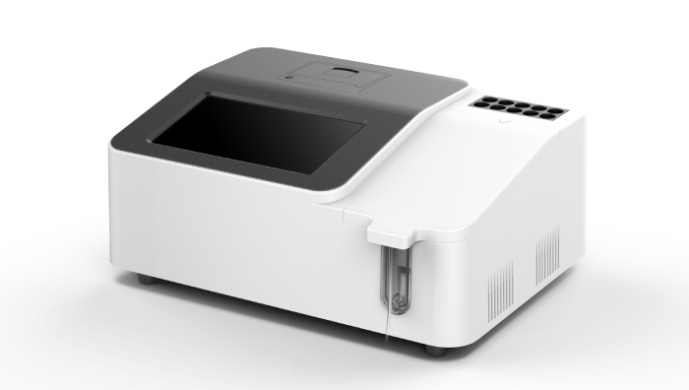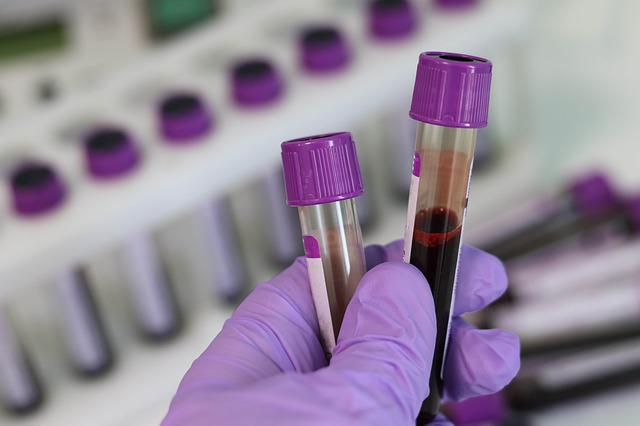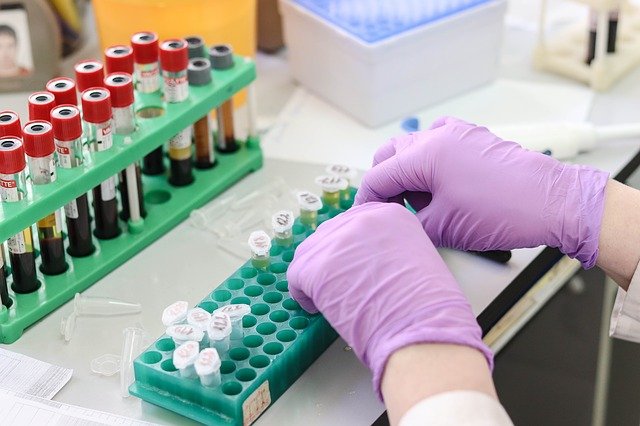
1. The microplate reader principle
A plate reader is a photoelectric colourimeter or spectrophotometer that uses the Lambert-Bier law. Monochromatic light from the top of the plastic micropore, through the small hole in the reagent and the specimen reaction of coloured solution, part of the light is absorbed, through the solution of the other part of the light by the receiver below the micropore converted into electrical signals, displayed in the external computer.
2. Equipment and reagents
Enzyme marker, (uncoated) blank plastic microplates, spiking gun; blood glucose reagents (end-point method, manual or semi-automatic biochemistry analyser).
3. Linear serum
Six different concentrations of serum (preferably with standards) within the linear range of the endpoint method for this biochemical item are selected and tested together with the specimen. In this way, we can obtain a formula based on the absorbance of the 6 different concentrations of serum, based on a linear regression relationship: concentration = coefficient times absorbance (C = bA,).
4. Reagent blank control wells
A reagent blank control well was set up to deduct the effect of the reagent itself on absorbance.
5. The ratio of reagent to specimen addition is adjusted so that the total amount of reaction solution after mixing the two does not exceed the capacity of the microtiter, e.g. an enzyme marker requires no more than 250 µl. This ratio should ensure that the reagents are not depleted etc., i.e. that the reaction is within the optimum range. Add the specimen first, then the reagents (a volumetric gun is better) to reduce reaction time errors between microtiter wells.
6. Microtiter allocation
A common microplate has 8*12 wells and a maximum of 96 specimens can be made in one plate. There is usually one reagent blank control well, 6 'linear serum' wells and 89 specimen wells.
7. Warm bath: temperature and time according to reagent instructions. 8.
8. Plate reading: Read the OD value (i.e. absorbance) of each well, deduct the reagent blank and obtain the linear equation of concentration and absorbance. Substitute the absorbance of the specimen wells into the linear equation to obtain the final concentration of the specimen. (Batch processing is easy with EXCEL tables)
Summary of analysis
1. Disadvantages of the semi-automatic biochemistry analyser
With the development of testing technology, hospitals in better economic regions have basically achieved fully automated biochemical analysis. Semi-automatic biochemistry analysers have a tendency to be completely eliminated.
However, because of the low cost of instruments, reagents and consumption, semi-automatic biochemistry analysers still have some room for survival in many small medical clinics at present. Moreover, semi-automatic biochemistry analysers are relatively easier and faster to operate than manual biochemistry (UV spectrophotometer method), etc.
Compared to plate readers, semi-automatic biochemistry analysers also have their shortcomings. Semi-automatic biochemistry analysers are prone to cross-contamination, unstable results and require a larger amount of reagents, etc. 2.
2. Advantages and disadvantages of microplate readers for biochemistry
Compared to semi-automatic biochemistry analysers, microplate readers have the following advantages.
1) 96 samples can be tested simultaneously, greatly increasing the speed of testing and saving working time and space.
2) Cost savings due to the low amount of reagents lost.
3) Good reproducibility and stability when testing specimens.
4) the same batch operation comes with a 'linear' reference, deducting reagent blanks, for more accurate results.
5) No need for liquid line flushing, which also avoids cross-contamination.
Shortcomings of microplate readers
The microplate reader has only been validated for the blood glucose endpoint method and experiments are needed to determine if it can be used for other methods. The semi-automatic biochemistry analyser has multiple wavelengths to choose from, whereas the ELISA has only two. It has been suggested that the wavelength at which the maximum absorption peak occurs is the recommended wavelength for experiments. However, it is not that other wavelengths cannot be used, but only that the differentiation of absorbance for different concentrations of specimens is reduced.
3. Prospects for microplate readers
In laboratory work, enzyme markers are often used for the detection of qualitative microplates in immuno-laboratories, and are specialist instruments for reading and analysing the results of enzyme-linked immunoassay experiments. It is used in clinical testing, biological research, agricultural science, food and environmental science, particularly with the development of a wide range of ELISA kits. In medical tests for hepatitis B five, HIV testing, hepatitis C testing, eugenics five, hormone testing and many more, enzyme markers have been involved.
The
biochemical tests done by enzyme markers require experimental validation to be performed. Experimental data is the mouthpiece of the test. For small medical units, it can be used when receiving large volumes of medical examinations from the community.



